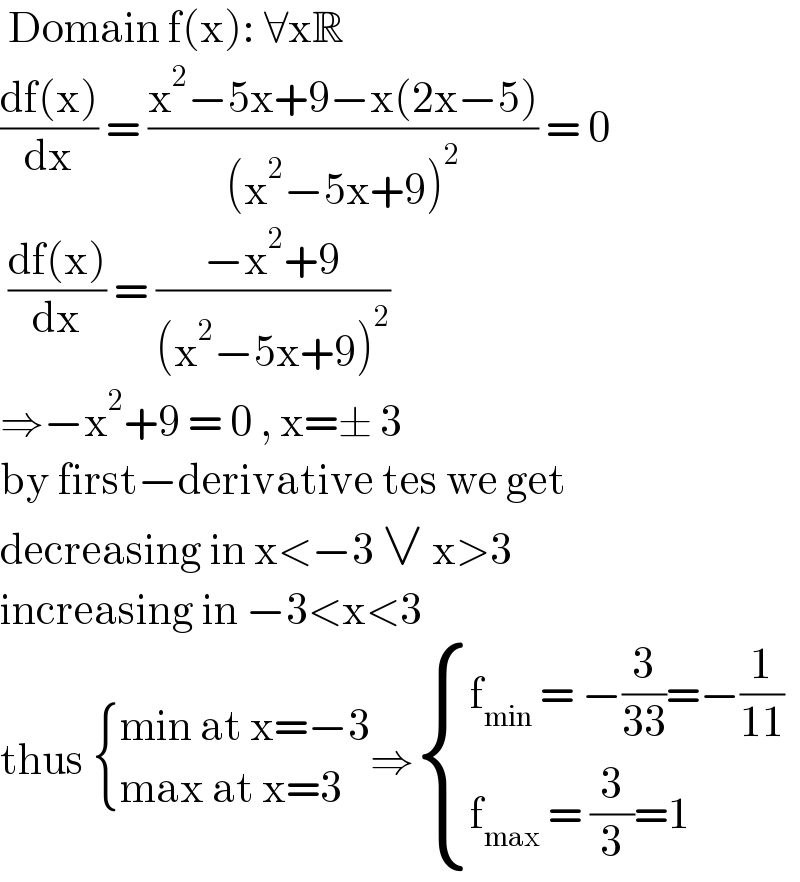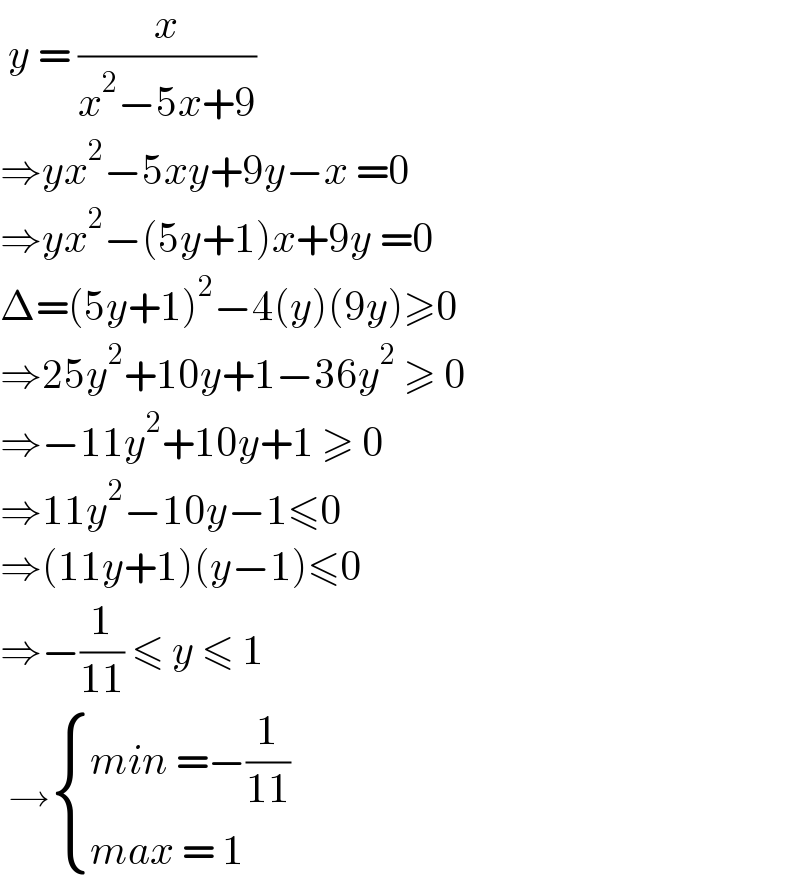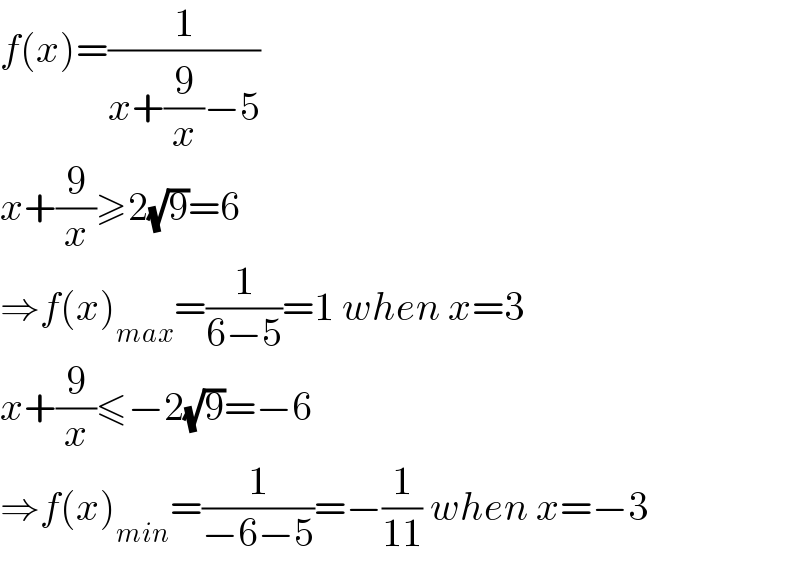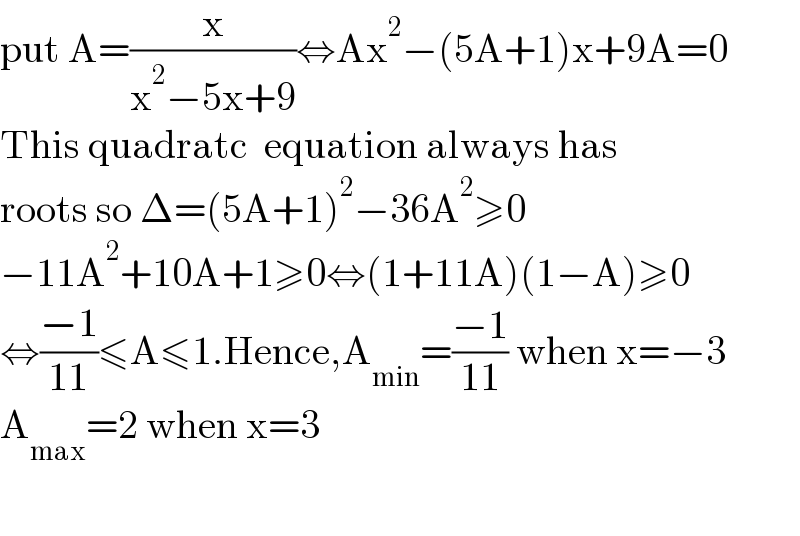
Question and Answers Forum
Question Number 141294 by bemath last updated on 17/May/21

Answered by MJS_new last updated on 17/May/21

Answered by EDWIN88 last updated on 17/May/21

Answered by bemath last updated on 17/May/21

Answered by mr W last updated on 17/May/21

Answered by 1549442205PVT last updated on 06/Jun/21

